Garden Galleries
Ready to get inspired? Start here!

Butterflies
Butterflies are like living jewels gliding from flower to flower across the landscape collecting nectar and spreading pollen. Their colorful wings contrast with the flowers and green leaves, providing a cheerful, yet silent reminder of nature’s beauty.
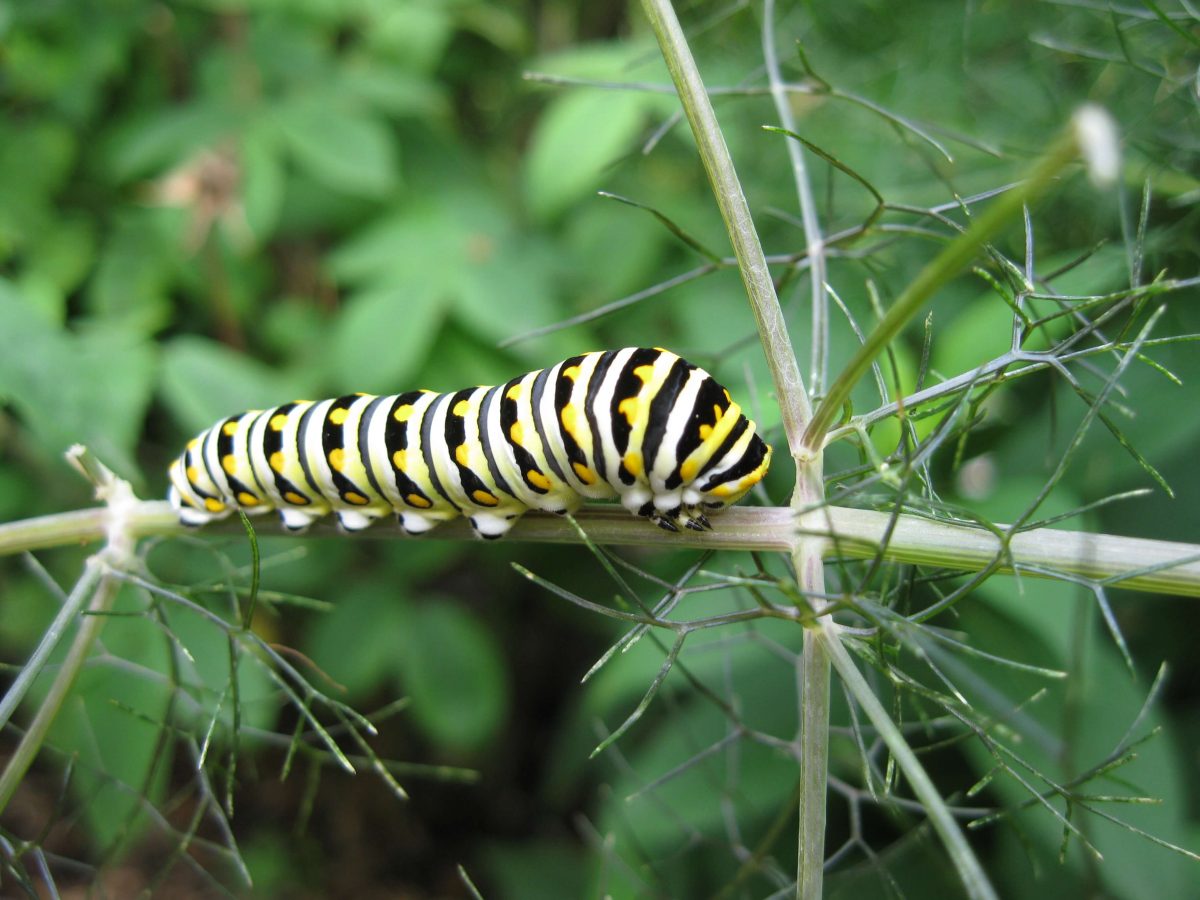
Black Swallowtail Butterfly Caterpillar
Butterflies, like swans, begin their lives in a much different appearance than their adult form. Caterpillars, such as this black swallowtail butterfly (Papilio polyxenes) caterpillar, spend several months feeding on their favorite plants - in this case, fennel (Foeniculum vulgare), gaining the energy needed to grow and build a chrysalis to become the beautiful butterfly that graces our landscapes year-round in South Texas.
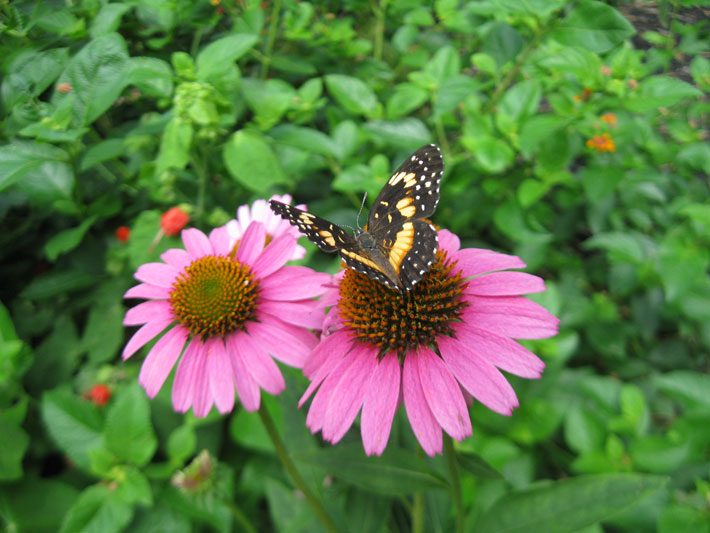
Bordered Patch Butterfly
This beautiful and dainty bordered patch butterfly (Chlosine lacinia) can’t resist the lure and bold color of a purple coneflower (Echinacea purpurea) in this springtime landscape. Bordered patch butterflies are one of the first to emerge in warm weather and visit a wide variety of both cultivated and wildflowers.
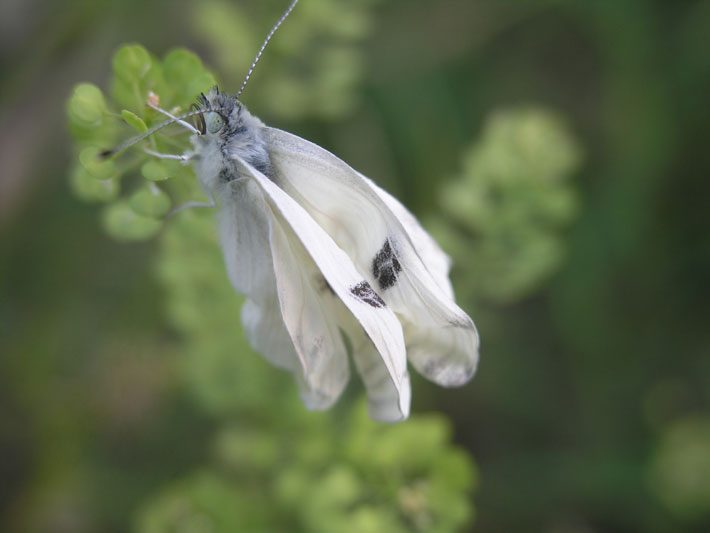
Cabbage White Butterfly
Spring is a time of new beginnings across the landscape. This cabbage white butterfly (Pieris rapae) has just emerged from its chrysalis and is resting on some common peppergrass (Lepidium virginicum) while its wings expand and harden. Within minutes, this beauty will be flitting from flower to flower and sampling the sweet nectar to be found.
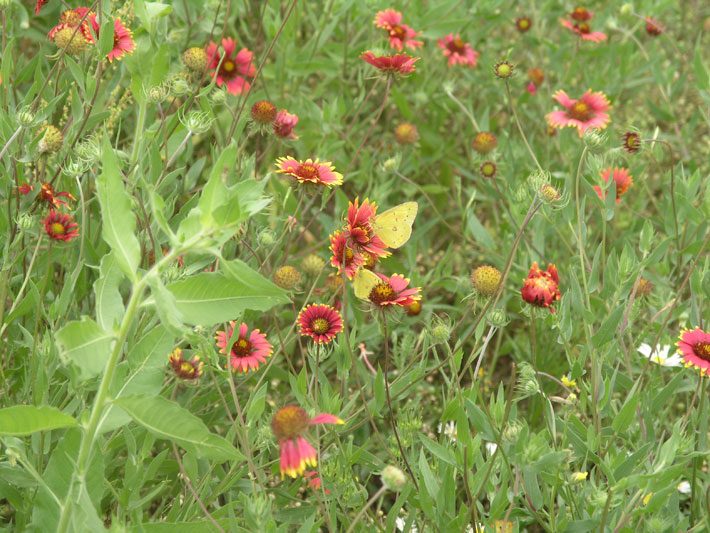
Clouded Sulphur Butterfly
Springtime brings fields of beautiful bluebonnets and acres of deep red Indian blankets (Gallardia pulchella). Indian blankets provide nectar and pollen for a variety of insects, including bees, beetles, moths and butterflies. A year-round resident of South Texas is the clouded sulphur (Colias philodice) butterfly, a pair of which is observed feeding on nectar among the hues of red, green, yellow and white.
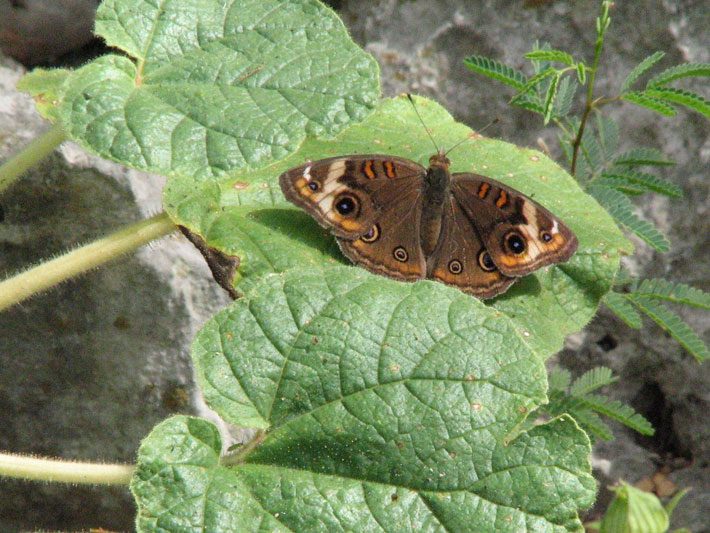
Common Buckeye Butterfly
It's hard work flying from flower to flower for a meal. This common buckeye (Junonia coena) butterfly is taking a rest on a devil's claw (Proboscidea ludoviciana) leaf. Buckeye butterflies love the nectar from asters and sunflowers and lay their eggs on ruellia and snapdragons.
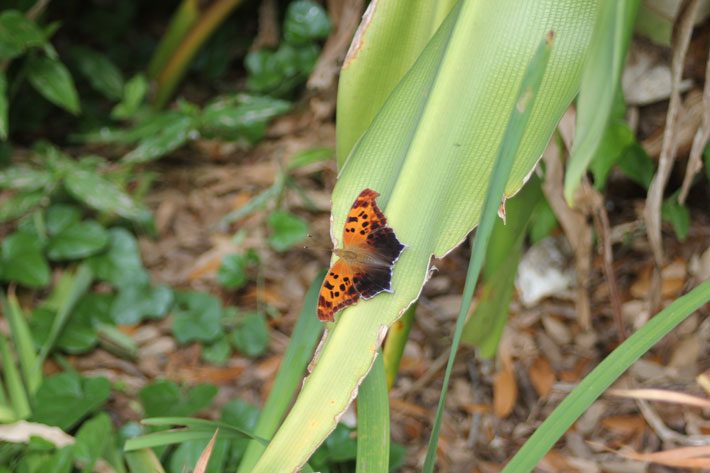
Eastern Comma Butterfly
Not all butterflies seek out open spaces and fields full of flowers as their home range. Some species prefer the solace of a shady glen and quiet, tree-filled landscape. This beautiful eastern comma (Polygonia comma) butterfly is resting on a canna lily (Canna spp.) leaf in a shady corner of the landscape. You can find this beautiful butterfly where cedar elm (Ulmus crassifolia) trees grow.
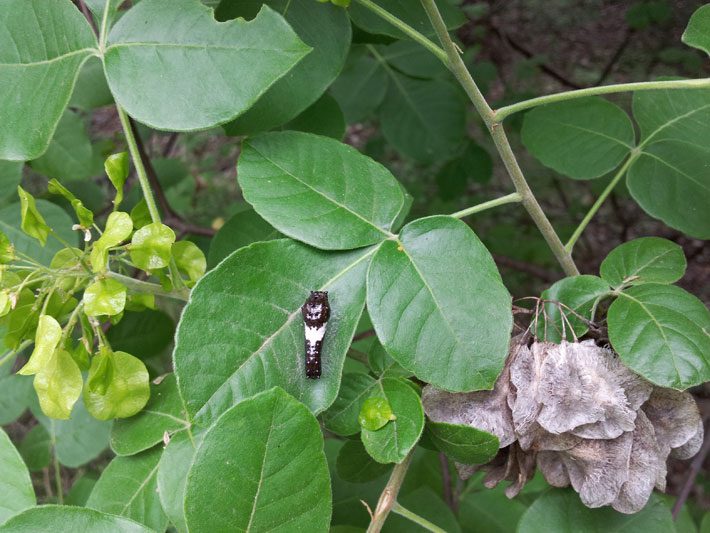
Giant Swallowtail Caterpillar
This hoptree (Ptelea trifoliata) has been visited by a bird. Look again…this is a caterpillar! As a means of camouflage, the caterpillar of the giant swallowtail (Papilio cresphontes) butterfly resembles a bird dropping throughout its development to the adult stage to avoid being eaten by predators such as birds and small mammals.
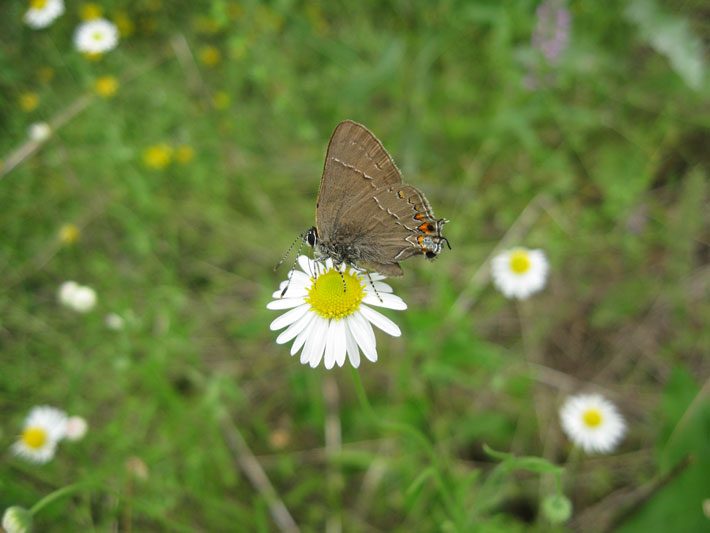
Gray Hairstreak Butterfly
With all of the beauty in the landscape, the variety of flowers and colors that burst forth in spring can make it easy to overlook small details. The quarter-sized gray hairstreak (Strymon melinus) butterfly is a beautiful, yet unobtrusive, denizen of the landscape. Here, a lazy daisy (Aphanostephus skirrhobasis) provides a resting place. Seems like an appropriate name, yes?
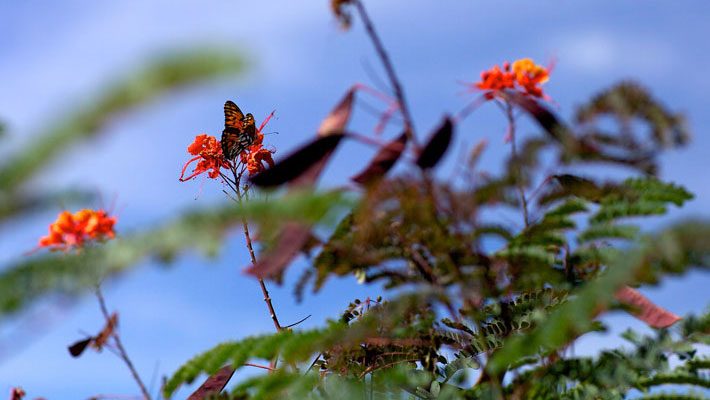
Gulf Fritillary Butterfly
This gulf fritillary (Agraulis vanillae) butterfly takes a private moment to sip nectar from a bright orange Pride of Barbados (Caesalpinia pulcherrima) blossom. Gulf fritillaries are one of the most colorful denizens of a floral landscape, moving quickly from flower to flower in search of a sweet meal.
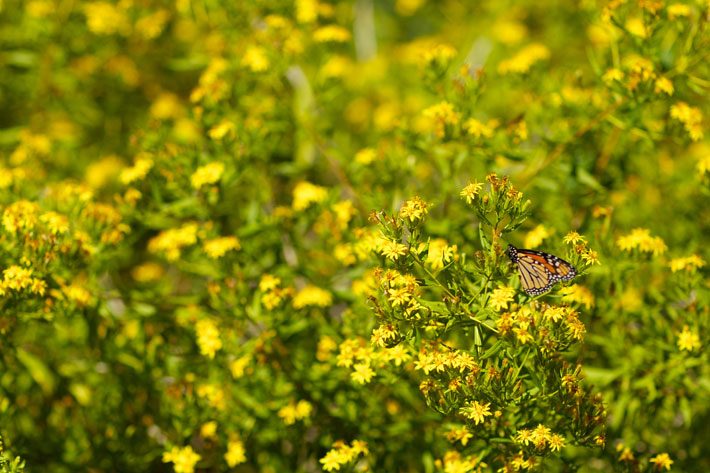
Monarch Butterfly
This lone monarch (Danaus plexippus) butterfly has this patch of trixis (Trixis inula) all to itself to sample the nectar in peace. Monarch butterflies are among the most popular and recognizable landscape visitors. To attract them, plant plenty of lantana, butterfly weed, milkweeds and flowers such as Trixis.
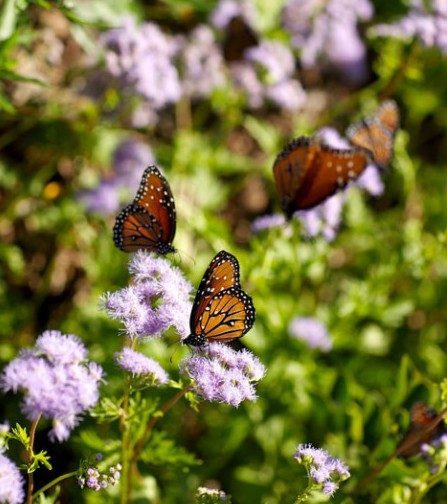
Queen Butterflies
Blue mistflowers (Conoclinum coelestinum) belong to the same flower family as sunflowers. These drought-tolerant additions to any landscape are extremely attractive to butterflies, such as these queen butterflies (Danaus gilippus). Queen butterflies are related to the monarch (Danaus plexippus) butterfly and are attracted to milkweeds, nectar, rotting fruits and animal droppings.
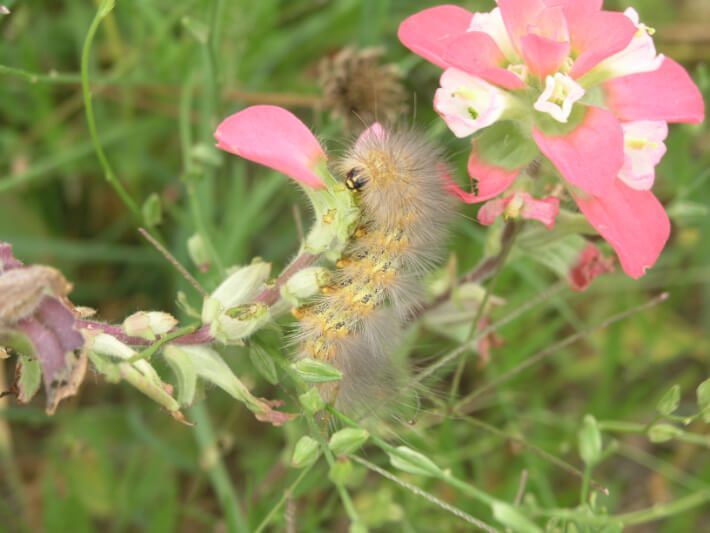
Saltmarsh
Not all flower lovers in the spring are butterflies or even become butterflies. While butterflies love flowers for their nectar, others such as the saltmarsh caterpillar (Estigmene acrea) love flowers, such as this Indian paintbrush (Castilleja indivisa), for their pure nutritional value. This caterpillar will develop into a beautiful white moth with black spots.
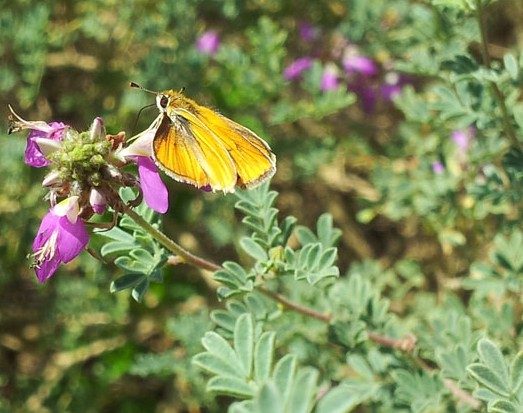
Southern Skipperling Butterfly
This tiny little flyer belongs to a subgroup of butterflies called skippers. Skippers can be differentiated from butterflies because the end of their antennae look like hooks and the end of butterfly antennae look like little knobs. Skippers such as this southern skipperling (Copaeodes minimus) flit from flower to flower sampling nectar along the way. In this case, a black dalea (Dalea frutescens) and its beautiful purple flowers is the latest host.
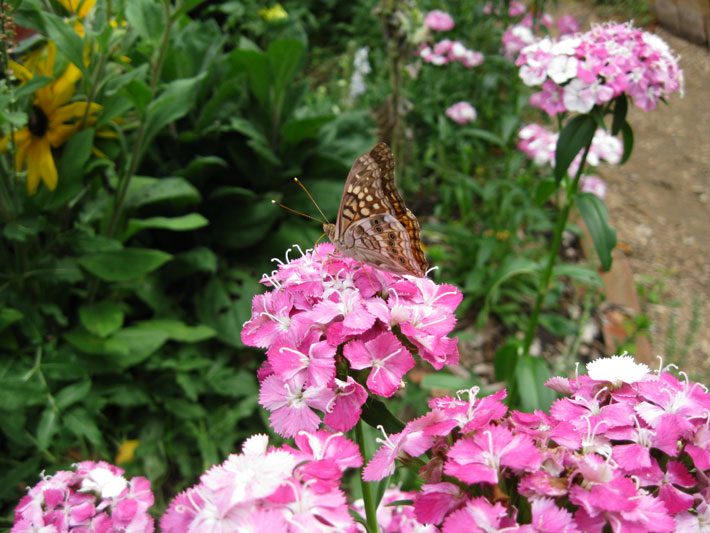
Tawny Emperor Butterfly
When the sap starts creeping upward in springtime from the tree roots into the trunks and branches, the tawny emperor (Asterocampa clyton) butterflies begin to appear looking for sap oozing from the trunks and damaged areas on the trees. When they can't find sap, they turn their attention to beautiful flowers such as this dianthus (Dianthus spp.).
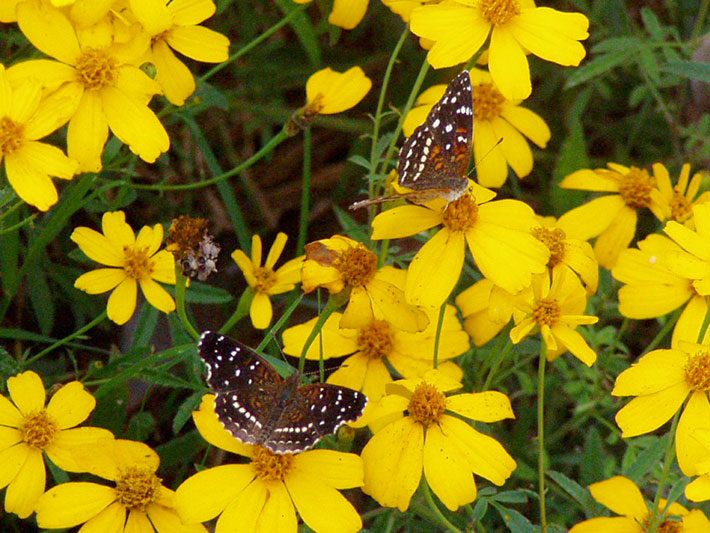
Texan Crescent Butterflies
These Texan crescent (Anthanassa texana) butterflies are enjoying the benefits that this stand of copper canyon (Tagetes lemmonii) daisies provides. Texan crescents lay their eggs on ruellia, shrimp plant, and members of the Acanthus family, which are all valued and drought-tolerant members of South Texas landscapes.



